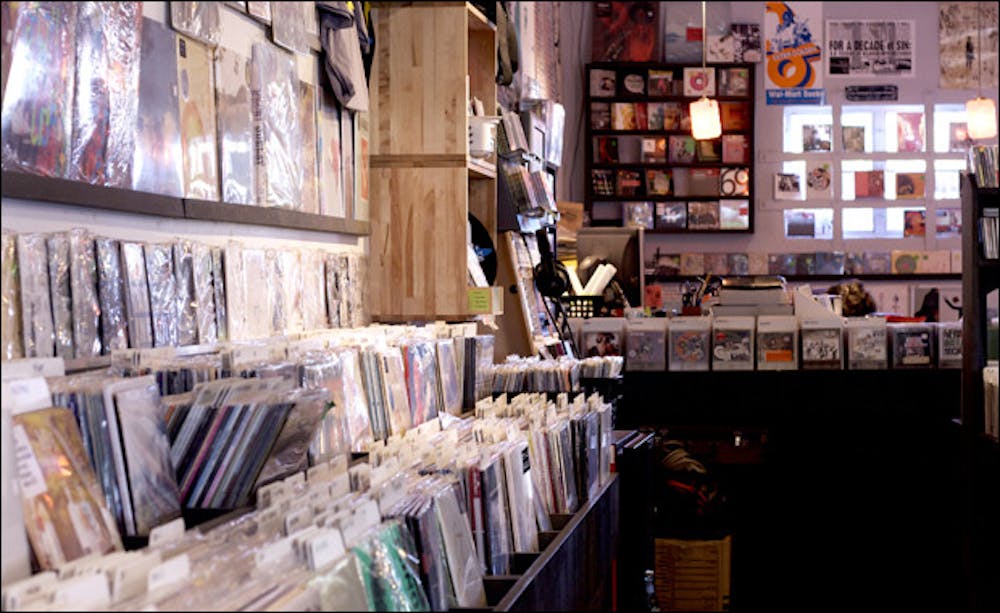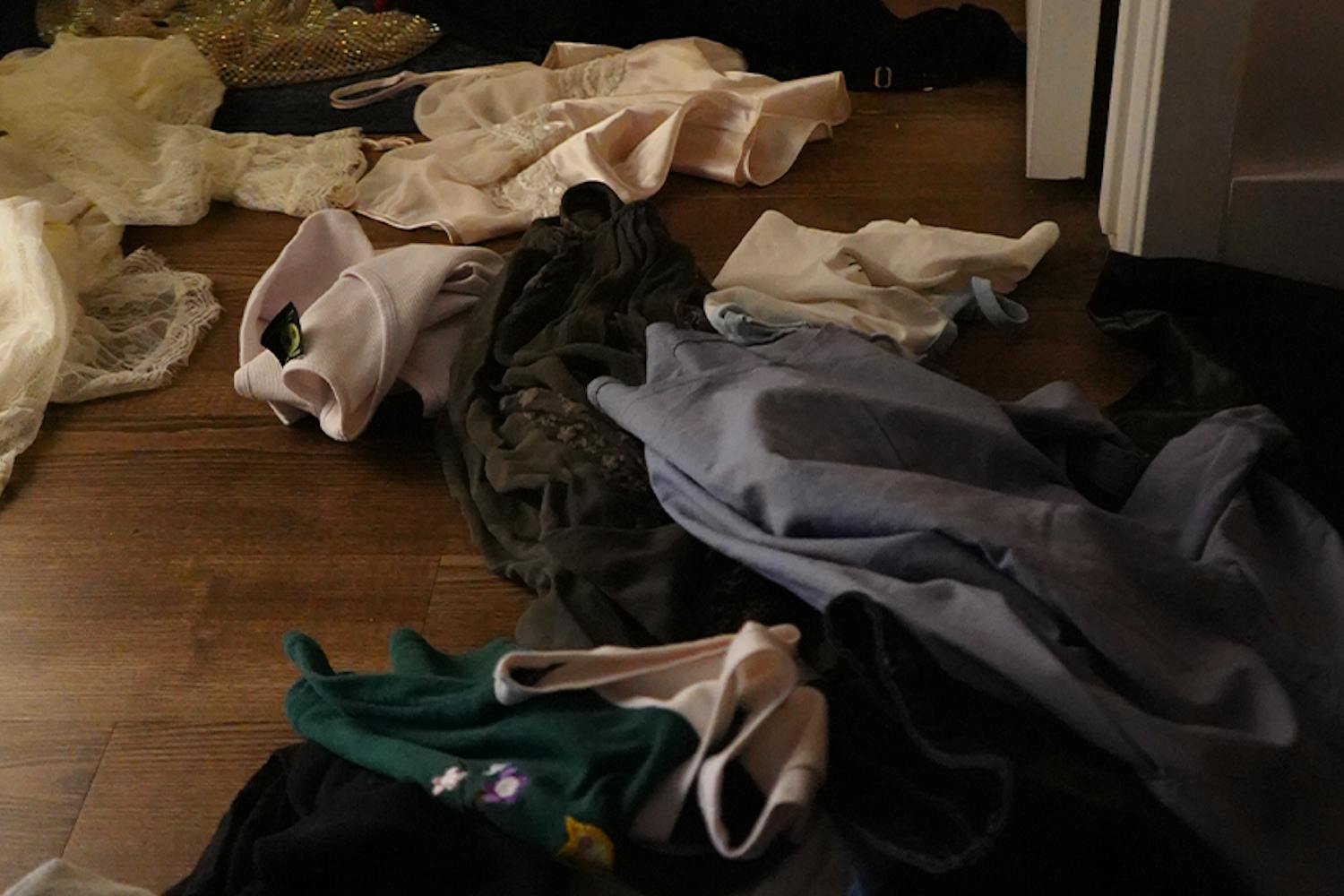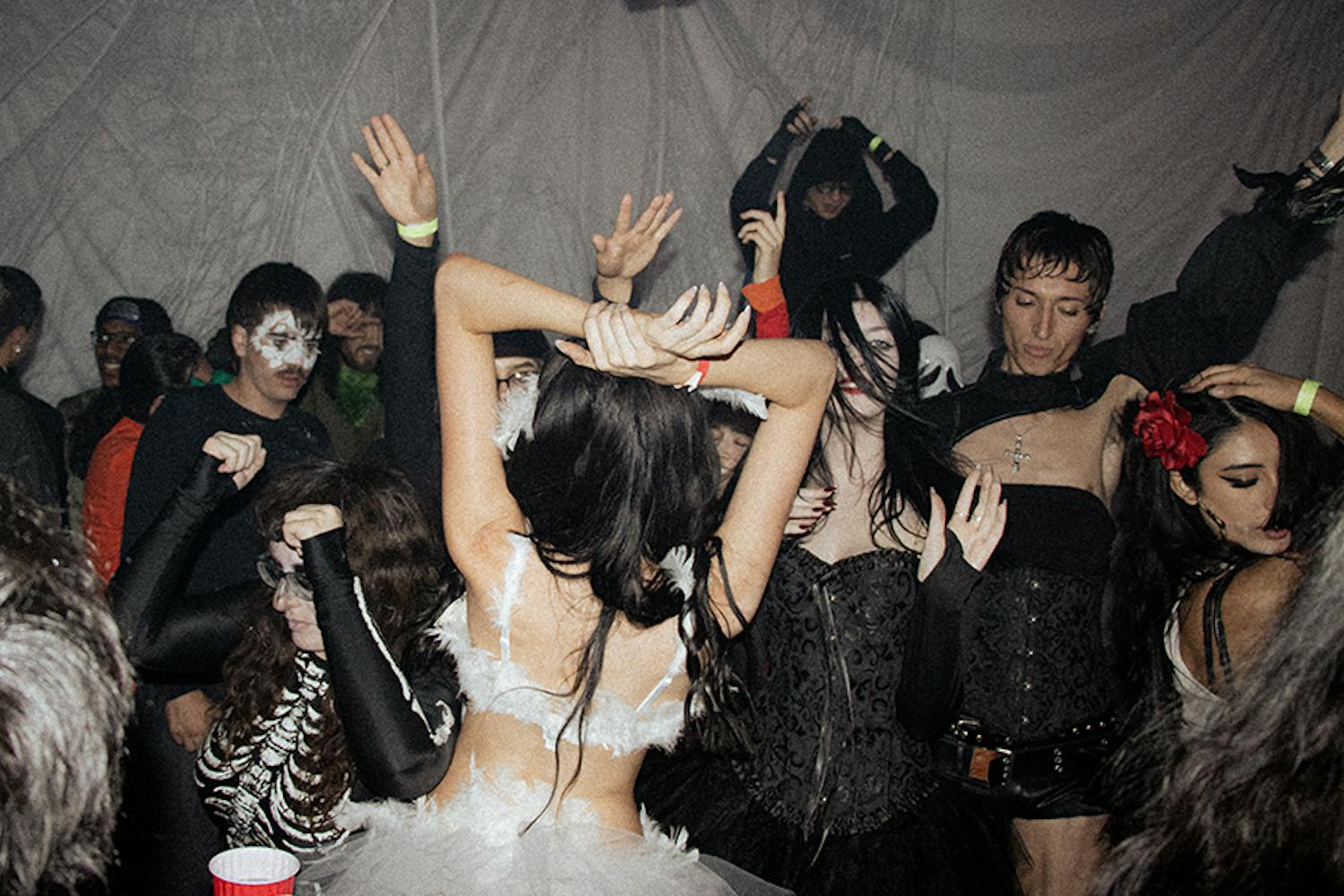Rising From the Ashes
A half-eaten sucker rests on the edge of a wall outside the Chase building. Dirty, plastic news distribution boxes line the street corner. Hordes of people crowd the bus stop. To an untrained eye, downtown Phoenix appears as a juxtaposition of oddities and buildings in the middle of a desert.
Here is a city with huge sports venues, art districts and unique small businesses that is determined to gain attention not only on a national scale, but also from local residents.
Yes, the fifth largest city in the United States is struggling to gain recognition and establish itself as a noteworthy attraction of the valley that surrounds it.
Simply venturing to the city for a sporting event may only give the appearance of closed-down storefronts and warehouses, palm tree-spattered streets and a few tall buildings — less than enticing visual attractions.
With a desire to gain appreciation from Valley residents and visitors from afar, the city is taking the steps to educate people on all downtown has to offer, to encourage people to look beneath the surface and see the shops and restaurants hidden in the crevices.
Evolution
It may be hard to understand why Phoenix has had problems drawing a focus from a majority of Valley residents in the past few decades. Many will only travel to the city to catch a Suns or Diamondbacks game, commute to work, or attend a court hearing.
Unlike other major cities in the U.S., Phoenix struggles to bring in outsiders. A look to its past can be a clue as to why it has been struggling for attention.
The city was officially recognized in 1868 when an election precinct was established. Downtown lots were sold for $7 to $11 in 1874. A year later, the city had 16 saloons, four dance halls, two banks and a faro table. From there, Phoenix continued to grow at a steady pace with school attendance rising and a growing war industry.
By the 1940s, the city was economically booming. Businesses began to build along Roosevelt Street, named after President Theodore Roosevelt, and sometimes referred to as “Roosevelt Row.”
However, the neighborhood began to decline, as it became an area of crime and drug use from the late ‘70s to ‘90s.
After several years of artistic development, the downtown area has grown as an area of interest with galleries and crowds drawn to First Fridays events held by Artlink, Inc. This once a month “block party” has more than 100 local artists and vendors.
Promotion
Many locally owned businesses are putting their own effort toward promoting the community. There are several organizations that work together to educate visitors about the attractions downtown.
Urban Affair is a group that works to make a proactive change in the public’s perception of the city and to garner the public’s support of the area.
The group puts together the You Are Here map to help visitors navigate the city and promote upcoming events with an emphasis on the arts.
Local First is a non-profit organization that supports, maintains and celebrates businesses in Phoenix. It was started by Phoenix business owner Kimber Lanning, and with more than 1,500 businesses participating, it has turned into the largest coalition in the country.
“[Small businesses] are important because it keeps more dollars in the community and offers a unique experience,” Lanning says. “If you went to a city like Chicago, would you shop at [chain stores]?” Residents need to put money where they want the attention to focus, she says.
Lanning currently owns two businesses in downtown Phoenix — Modified Arts on Roosevelt Street and Stinkweeds, a record store that neighbors a few other local businesses.
Georganne Bryant’s boutique Frances is one of the neighbors to Stinkweeds. Bryant and Lanning put together Small Wonders, a map of local businesses in central Phoenix. The Small Wonders map was created as a way to “build awareness and help people find places to visit” in Phoenix, Lanning says.
On the inside, Bryant’s boutique has undergone a distinct transformation from it’s roots as a bar in the 1950s to the creative, airy environment it is now. This transition from a closed down bar to a boutique is a representation of the city’s progression, Bryant says.
“Phoenix has been experiencing an identity crisis,” Bryant says. However, she and other local businessowners are making a strong effort to establish the city as something unique and to promote civic pride, she says.
Bryant also supports local talent in the boutique by selling products from local artists, and hosting events like the annual Indie Crafeteria which gathers local artists to sell their goods and promote the community.
In her effort to take part in the revival of Phoenix, Bryant says she is excited that her store has received such a pleasant welcoming into the business community and is happy to be a part of the development. “It’s really exciting because I’ve lived here over 20 years,” she says. “I’ve seen a lot of people leave because it wasn’t ‘cool.’ ”
A firm believer in “Love Phoenix or Leave Phoenix,” Bryant created bumper stickers and apparel voicing that exact sentiment. She says she hopes they will inspire people around the Valley to discover Phoenix.
New Developments
With more than 50 percent of Phoenix’s population between 18 and 51 years old, businesses need to target a younger audience to encourage growth.
The recent expansion of Arizona State University’s Phoenix campus also brings in more potential for the businesses.
Bryant says she is thrilled about the expansion of the ASU campus downtown, which will draw more young people into enjoying the benefits of the city.
Some new businesses opening downtown focus on the interests of these young people, including their environmental concerns. This includes preservation of the old buildings, many of which were built in the 1950s.
Urban Cookies is one company that has made an effort to set a standard for socially responsible businesses for the future of Phoenix.
The owners, ASU Alumni Shaun and Brady Breese live in Phoenix and wanted to create a business that would set a “green” example.
“Being in central Phoenix is where we’ve always wanted to be,” Shaun says. “In ’09 one of our goals is to put more effort into becoming greener.”
She says the building will be retrofitted to be more eco-friendly, including a “green roof.” Their business will also be adopting changes like corn-based bags, she says.
Urban Cookies has been open for more than two and a half years, and the Breeses always look to the city for their needs. “Any time we need to buy something, we try to think ‘local first,’” Shaun says. They believe in putting their money where their mouth is in order to revitalize the area.
The business owners also cater to the younger crowd at ASU by accepting “M&G” dollars and offering cookie delivery to the campus.
As residents, they have seen the growth first hand. “We’ve seen the transition over the years and seen it go from nothing,” she says.
“Together [locally owned businesses] are creating a community. It’s helpful to have a small community because we use each other for resources.”
Another business and Local First member that has combined local support and eco-friendly business is Practical-Art, an arts boutique that sells only locally made crafts. Owner Jane Reddin has made eco-friendly adjustments to the building, which has gained attention around the Valley as an example for “green” business.
When opening the store in April ’08, Reddin made many adjustments to make it a socially responsible business.
Reddin removed carpet with eco-friendly glue remover and uses display cases made from old doors. When she first opened the store, she noticed there was no recycling in the area and soon she had four businesses participating.
She has always been a promoter of the city and is glad people are beginning to recognize all it has to offer. “There was nothing to do down here,” she says of when she first moved to Phoenix. “I moved from New York [for school] and I didn’t intend to stay, but I actually fell in love with it.”
A resident of Phoenix and graduate of ASU, Reddin knew Phoenix had no stores selling locally made art that could be used in every day life.
With more than 70 local artists represented in Practical Art, Reddin says she wants to continue to work to support the community
Moving into the Future
Just as other large cities have installed systems for mass public transportation, Phoenix has a high demand for travel around the city.
In 1887, the first horse-drawn streetcar line was built along Washington Street. Railroad eventually revolutionized the Phoenix economy and led to the city’s economic success.
Reddin says she is excited to have a light-rail stop right near the store as well as her residence. The difference between Phoenix and a city like Chicago, is that in Chicago riding public transportation is the norm, where here it is disdained, she says. “I think there’s going to be a lot of excitement for light rail [in the city],” she says.
Phoenix made a change in 2000, and the public voted to add a light rail system. The 20-mile track will have extensions in the future to reach even further from downtown.
There are high hopes from Phoenix business owners that this installment will draw visitors from around the Valley to explore the city.
“It will help tremendously,” Lanning says. “I think it adds more to civic pride and people are much more likely to support businesses.”
Erica Rodriguez, a journalism freshman at ASU who currently commutes from Peoria to the downtown campus, plans to use the light rail for transportation to Phoenix and Tempe. “I don’t know a lot of what Phoenix has to offer,” she says. “I plan on exploring it now that the light rail has been built.”
Rodriguez says she has attended First Fridays events and enjoyed the art scene off Roosevelt Street, but doesn’t know enough about other local businesses unless a friend tells her about a place to visit.
A New Identity
Lanning says the future of the city is very dependent on how young people react to the changes downtown. “We want to get more people living down here and put in neighborhood apartments for people to live down there, but the neighborhood residents will show up and fight it,” she says. “The issue of density in terms of residency [is getting more difficult]. Neighborhoods fight so strong against development that has height to it. We need more young people to fight [for] it.”
Though people may have been skeptical in the past, Lanning says that now they have a reason to be hopeful about the area. “I think we’ve never had the big projects, and there’s $1.4 billion of infrastructure going in downtown,” she says. “That’s really important, but we also have boutiques, stores and restaurants that are building up and this time it will be successful.”
Lanning says the fact that these businesses are doing so well even in economically difficult times is an indication of their success.
She is hopeful for the future of the city and wants it to continue to progress now that the light rail has been installed. “I am just hoping we have twice as many businesses, and more people on the streets and more pedestrian foot traffic,” she says.
Now the spotlight is on the city to see if it can draw attention back to the core of the Valley. Only an inquiring mind will be able to find the value in the city and discover its new identity. It takes more than just driving through to learn that by just turning a corner there are hidden treasures to be revealed beyond the half-eaten suckers.
Reach the reporter at jvanzale@asu.edu.




